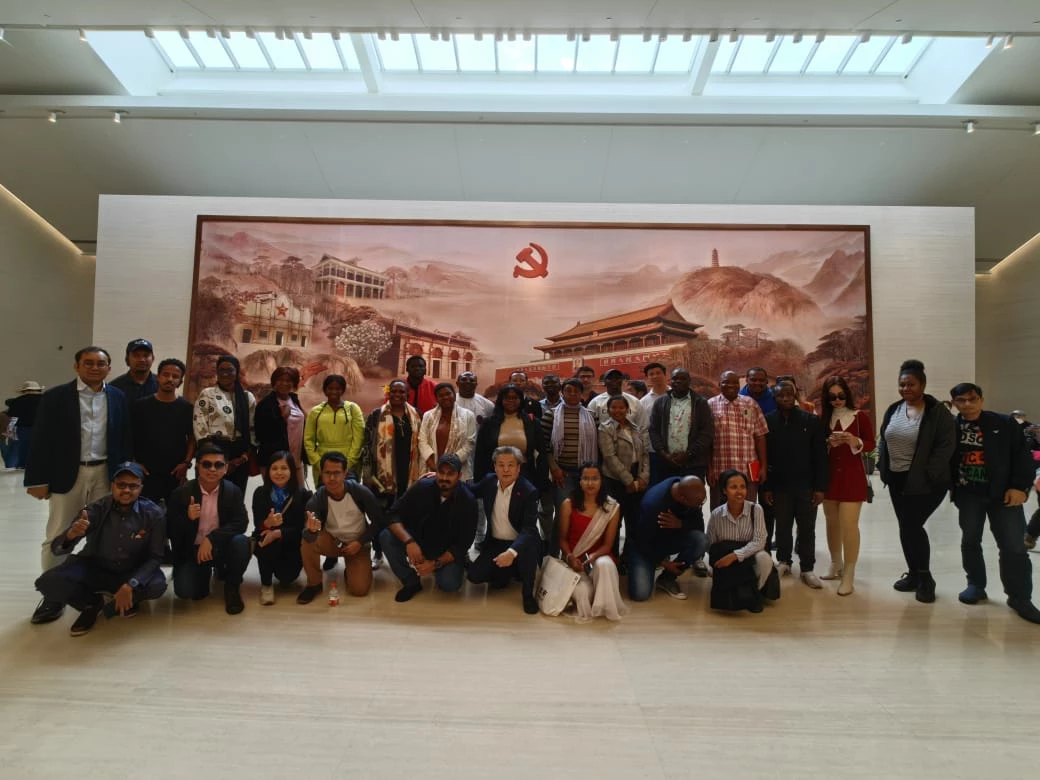Shanghai's Tapestry: A Journey Through Culture, History and Progress

Stay tuned with 24 News HD Android App

Embarking on a journey to Shanghai alongside journalists from 70 countries, our exploration was nothing short of an eye-opening cultural immersion. Our expedition was facilitated by the Chinese Ministry of Foreign Affairs and the China International Press Communication Center from Beijing, and Welcomed graciously by the Shanghai Municipal Foreign Affairs Office, our voyage commenced with the spectacular opening ceremony of the China International Import Expo (CIIE). This grand event symbolizes China's boundless economic outreach, offering global trade opportunities, and marks a pivotal milestone in my journalistic career.
Our first encounter with Shanghai's grandeur led us to the architectural wonder of the Shanghai Tower, an iconic skyscraper nestled in the Lujiazui financial hub. Standing tall at a staggering 632 meters, this megastructure seamlessly integrates business, accommodation, entertainment, and more. Its 127 floors and 5 underground levels make it not only the tallest building in China but the second tallest in the world. This colossal feat of modern engineering stood as a testament to Shanghai's innovative prowess.
The visit to the CPC First National Congress Memorial Hall was a journey through China's historic timeline. This national first-class museum commemorates the site of the inaugural CPC National Congress in 1921, marking the birth of the Communist Party of China. What struck a chord was observing a mother passionately narrating the historical significance to her daughter within the museum. It spoke volumes about the importance of heritage and how the Chinese culture cherishes its rich history, passing it down through generations.

Our tour at the Shanghai Media Group was an insightful peek into the technological advancements shaping modern news dissemination. However, contrasting this was the somewhat exorbitant cost of services at the Shanghai Pudong Youyou Xinfu Nursing Hall, an exceptional elderly care facility. The need for more affordable access to such crucial services emerged as a significant observation.
While a cruise orchestrated by the Ministry of Foreign Affairs presented the picturesque beauty of Shanghai, the city's bustling streets unravelled an unsettling facet. Persistent disturbances from individuals offering services through deceptive means stood in contrast to Shanghai's cultural grace. Urging municipal authorities to address such practices, these experiences seemed detached from the rich cultural tapestry Shanghai embodies.
In Shanghai, the absence of a language barrier for foreign visitors was remarkable. From shopkeepers to cab drivers, the ability to communicate in English showcased the city's welcoming and inclusive nature, making the experience more accessible and enjoyable.
Our journey through Shanghai painted a canvas of cultural richness, architectural splendour, technological advancements, and societal nuances. Celebrating the city's allure, it underscored the vital need to strike a balance between progress and the preservation of Shanghai's unique cultural identity.
This narrative attempts to encapsulate a city in perpetual motion, fusing its rich past with a future that continually unfolds, offering a glimpse of Shanghai through the lens of an inquisitive journalist.
